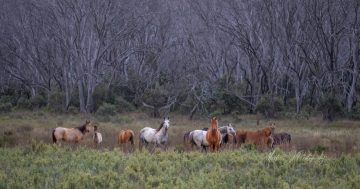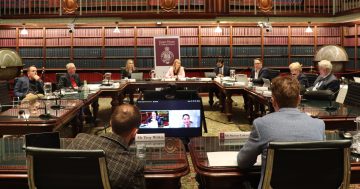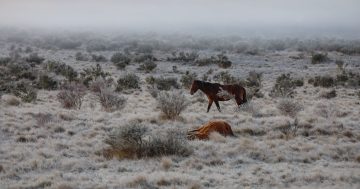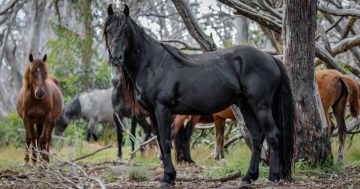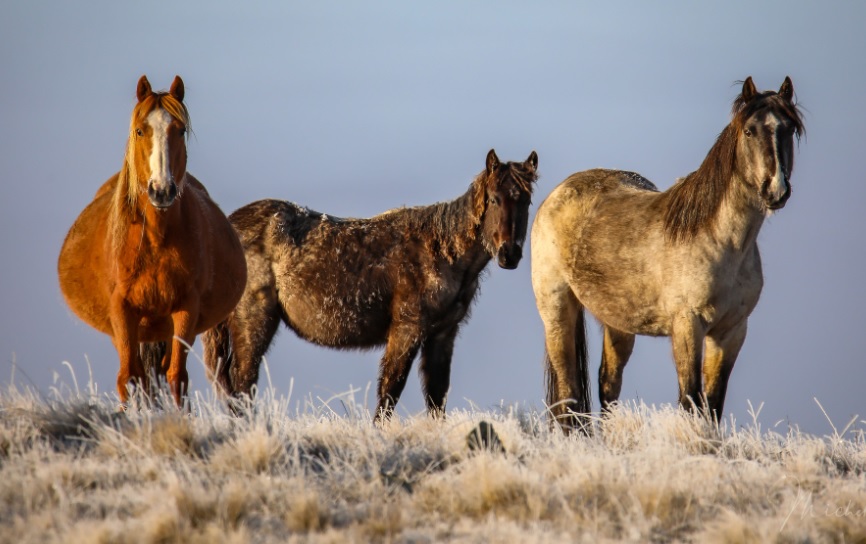
Brumbies in NSW are facing an uncertain future with aerial shooting now being proposed as a means of managing the environmental impact of the horses in Kosciuszko National Park. Photo: Snowy Brumby Photography Adventures with Michelle and Ian.
As scores of wild horses were continually trucked out of Kosciuszko National Park last week as part of a NSW Government-ordained culling program, the future of the species was being debated within the four walls of the Federal Parliament.
The first public submissions to the Senate inquiry into the impacts and management of feral horses in the Australian Alps saw 15 witnesses called to speak, with wildlife experts and environmentalists airing their concerns about the damage being wrought by the species on native flora, fauna, waterways and the landscape.
Known traditionally as brumbies, the wild horses have long been in the sights of the NSW, ACT and Victorian governments, each with a stake in the Australian alpine region, an area that spans the borders of north-eastern Victoria, south-east NSW and the ACT.
While none can agree on how to control the ever-growing population, brumby supporters now argue that the numbers being used to inform management plans are based on a flawed count methodology and are now calling for a moratorium on culling until that issue is resolved.
Invasive Species Council (ISC) advocacy manager Jack Gough told the Senate committee there were between 14,000 and 24,000 feral horses in Kosciuszko National Park as of 2022.
He said the current rate of removals by NSW officials, 1000 a year, would lead to numbers growing to more than 32,000 horses by June 2027.
To keep the population stable, he suggested 2800 horses needed to be removed annually, while about 6000 needed to be taken out each year to hit a target of 3000 horses by June 2027, he said.
Environmentalists argue that the horses are impacting native animal habitat and important waterways and changing the landscape significantly.
“Feral horses could be the final nail in the coffin for threatened native species, sending them extinct,” Mr Gough said.
Brumby advocates say it is possible to protect the environment and control horse populations.
The Australian Brumby Alliance supported procedures to manage horses and acknowledged their impact on the environment.
But the alliance would not support practices that resulted in brumby extinction.
“It’s very hard to discuss sustainable numbers with the opposition because they only want to talk about getting to zero numbers and there is no in-between,” alliance representative Jill Pickering said.
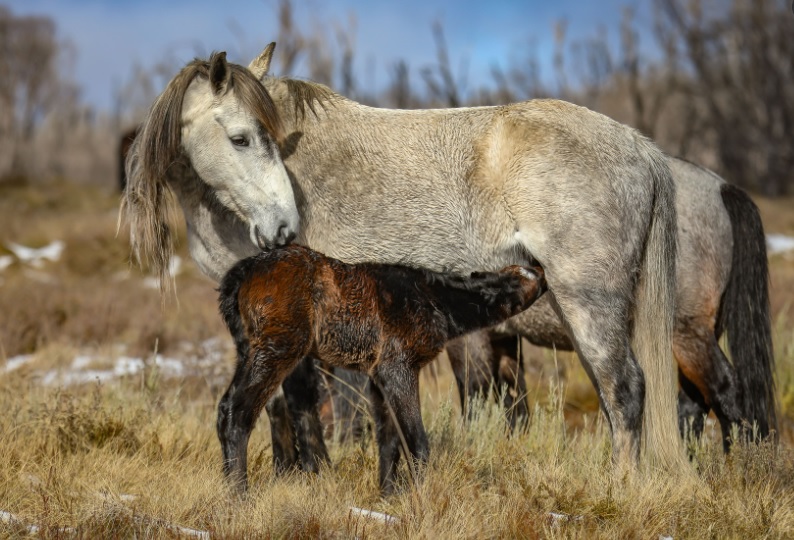
Next week a rally on the steps of the Victorian Parliament will demand non-lethal management of the wild horses and unite NSW and Victorian advocates in also calling for a credible population count and recognition of the heritage value of the horses. Photo: Snowy Brumby Photography Adventures with Michelle and Ian.
“We believe in dialogue and discussion but we’re now excluded from just about everything.”
Marilyn Nuske, of the Brumby Action Group, gave evidence at the hearing, afterwards telling About Regional her feeling from the experience was that she and her fellow brumby advocates had been treated largely with contempt.
“I certainly felt the hearing was displaying signs of bias,” she said. “Some of the questions sounded like they came from an Invasive Species Council cheat sheet.”
The inquiry attracted a total of 797 submissions.
The federal Senate inquiry report is due for release on 29 September.
Next Wednesday, Victorian Parliament will have its High Noon moment in the spotlight as a rally demanding non-lethal management of the wild horses will unite NSW and Victorian advocates in also calling for a credible population count and recognition of the heritage value of the horses.
The Solidarity for Wild Living Brumbies Rally kicks off at noon outside the Parliament in Spring Street, Melbourne.
Speakers will include former NSW MP Peter Cochran and Victorian MLCs Wendy Lovell and Bev McArthur.
Organisers are expecting an attendance of between 200 and 600 protesters.
Meanwhile, weeks remain for submissions to the NSW Government proposal to allow aerial shooting to control feral horses in the Kosciuszko National Park.
The consultation process on the proposal runs until 11 September.








